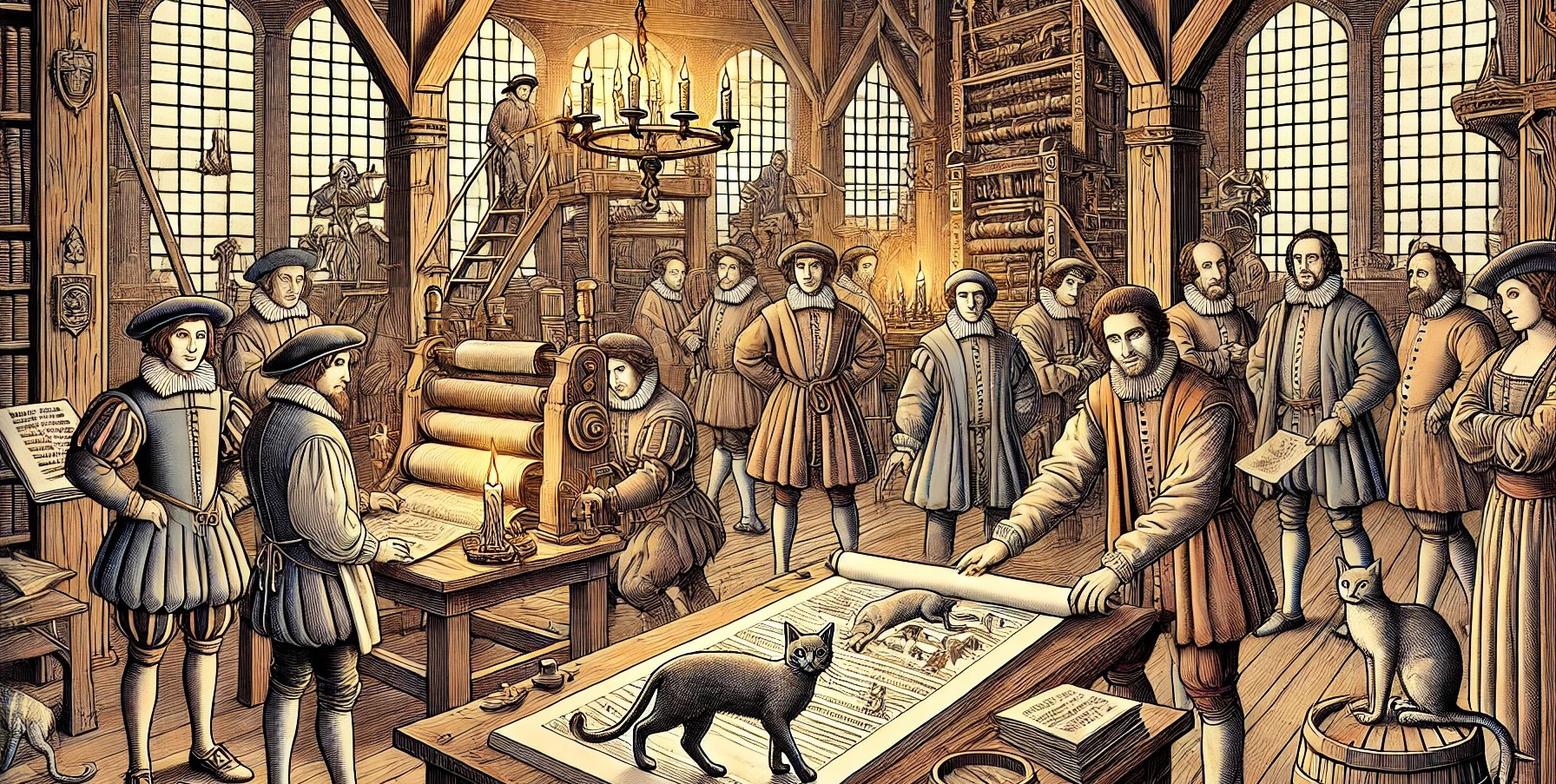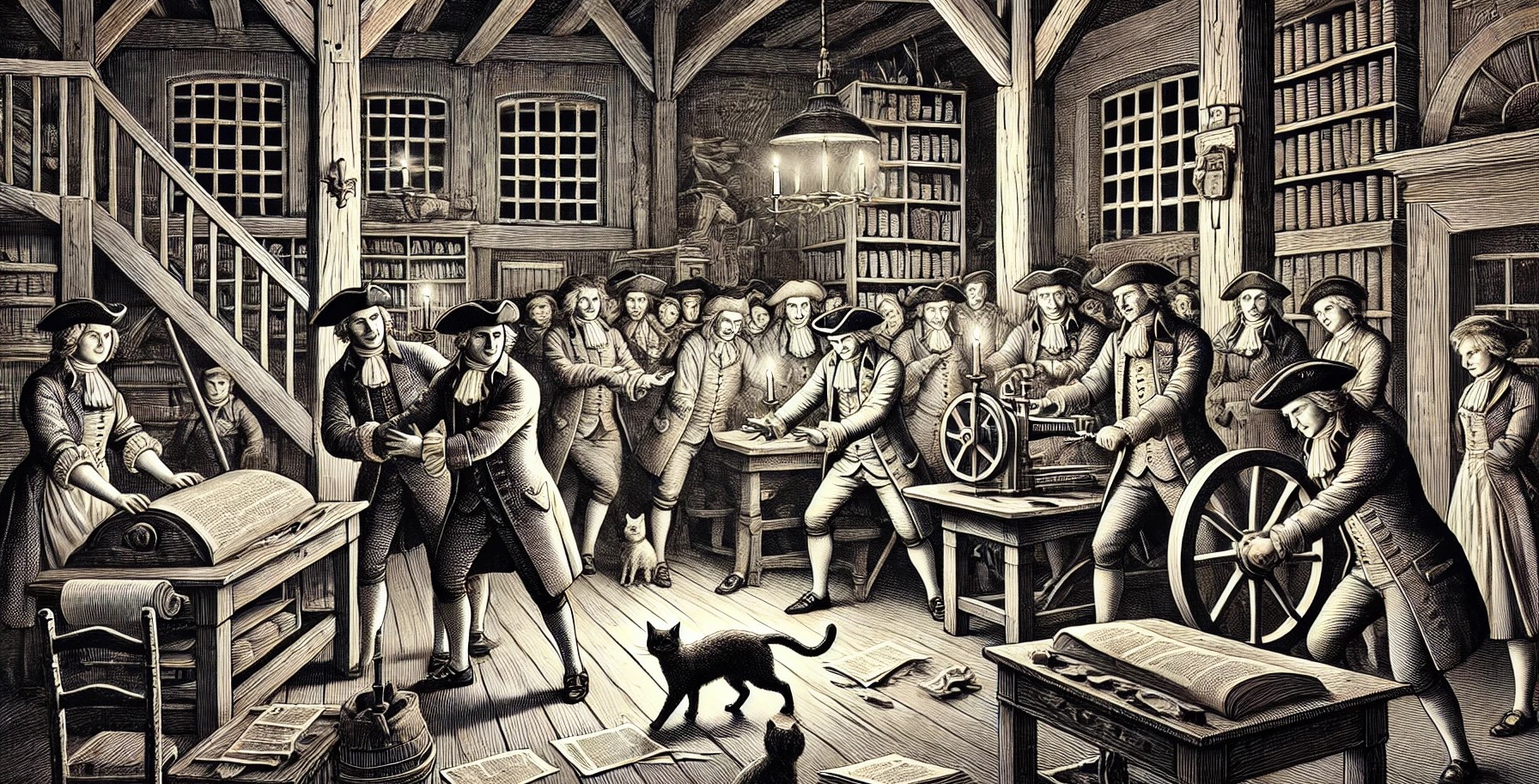Robert Darnton’s The Great Cat Massacre is a book that examines the ways of thinking, beliefs, and popular culture in 18th-century France. The author seeks to understand how people of that era perceived the world and attributed meaning to social events. Written within the framework of the history of mentalities (histoire des mentalités), the book focuses on various subjects such as folk tales, craftsmen’s rituals, the bourgeoisie, and the intellectual class’s worldview.

Illustrating the Book with AI - 1
Darnton analyzes historical documents and folklore narratives to demonstrate how people in the past interpreted events and their surroundings. The book explores the violent elements in fairy tales, incidents such as the “Great Cat Massacre” carried out by workers, and the formation of the intellectual world of the time.
Chapters
1. Peasants Tell Stories: The Meaning of Mother Goose
This chapter focuses on folk tales told in 18th-century France. The author argues that these tales were not merely intended to entertain children but also reflected the mindset of the time.Darnton traces the origins of well-known stories such as Little Red Riding Hood and explains their significance in peasants’ lives. He notes that the frequent presence of violence, sexuality, and death in these stories mirrors people’s realities and fears.
For instance, themes such as sacrificed children, monsters, and cruel stepmothers in folk tales reflect the harsh living conditions of peasants. Additionally, Darnton suggests that the violent scenes in these tales serve as a way to express unconscious fears through storytelling.
2. Workers Revolt: The Great Cat Massacre on Rue SAaint-Severin
This chapter, which gives the book its title, focuses on a striking incident that occurred in 18th-century Paris. A group of printing workers, expressing their resentment towards their masters, carried out a mass killing of cats. By slaughtering their employers’ and their wives’ beloved cats, the workers staged a form of symbolic rebellion. From a modern perspective, this event might seem barbaric. However, Darnton attempts to explain how this massacre made sense within the social structure of the time. Cats were perceived both as symbols of bourgeois comfort and as creatures associated with witchcraft. Thus, the killing of cats can be seen as both a challenge to the upper class and an expression of traditional beliefs. The author interprets this event as a form of ritual, where workers, under oppressive conditions, used humor and symbolic protest to cope with their frustrations.
3. A Bourgeois Organizes His World: The City as a Text
This chapter examines how the bourgeoisie perceived cities and their efforts to impose order on urban life. In 18th-century Europe, rapid social changes and population growth necessitated new forms of governance. The bourgeoisie sought to structure cities not only physically but also socially and culturally. In this context, urban planning and architectural elements were not merely aesthetic choices but also tools to reinforce social class distinctions. Darnton analyzes texts that illustrate how a bourgeois individual understood and structured city life.

Illustrating the Book with AI - 1
4. A Police Inspector Organizes His Files: The Anatomy of the Republic of Letters
This chapter focuses on police reports from the era and how the state exercised control over the population. In 18th-century France, the police not only prevented crimes but also monitored literary and political activities. Darnton points out that these reports provide valuable insights into the daily lives of ordinary people. Police inspectors meticulously documented information about booksellers and authors, thereby maintaining the censorship system. These records offer significant details about the intellectual climate of the time, such as how books circulated, which ideas were considered dangerous, and what types of literature appealed to the public.
5. Philosophers Prune the Tree of Knowledge: The Epistemological Strategy of the Encyclopédie
This chapter examines the impact of the Encyclopédie, a monumental encyclopedic work that shaped 18th-century intellectual thought. Led by thinkers such as Denis Diderot and Jean le Rond d'Alembert, this work represented a systematic attempt to organize knowledge and disseminate it to the masses. Darnton argues that the Encyclopédie was more than just a source of information—it was a tool for promoting a particular worldview. It became one of the foundational texts of the Enlightenment, encouraging a critical stance toward authority.
6. Readers Respond to Rousseau: The Construction of Romantic Sensibility
The final chapter explores how the public reacted to the works of Jean-Jacques Rousseau. Darnton investigates how readers perceived Rousseau and the emotional impact his writings had on individuals. Books such as Émile and Confessions elicited strong emotional responses from readers, deeply affecting many people. This phenomenon can be considered an early example of how literature influences individuals in a modern sense.
Place in Historiography
Robert Darnton’s The Great Cat Massacre is a work that seeks to understand how people in 18th-century France perceived the world, their mentalities, and their cultural practices. Influenced by the Annales School, the book shifts focus from major political events and figures to the thoughts and daily practices of ordinary people. Darnton examines sources such as folk tales, the cat massacre carried out by printing workers, police reports, encyclopedias, and reading habits to uncover the social structure and tensions of the period. For example, workers' symbolic rituals, such as expressing their resentment toward their masters through a cat-killing ceremony, or the prevalence of violence in folk tales, reflect the harsh realities of lower-class life. Employing methods from microhistory and anthropological history, the book demonstrates that everyday rituals and popular beliefs, often overlooked in traditional historiography, play a crucial role in understanding society as a whole. Darnton emphasizes that historians should go beyond official documents and turn to cultural narratives to fully grasp the past. By incorporating an interdisciplinary approach, he contributes significantly to the development of the history of mentalities and offers a new perspective on historical writing.


